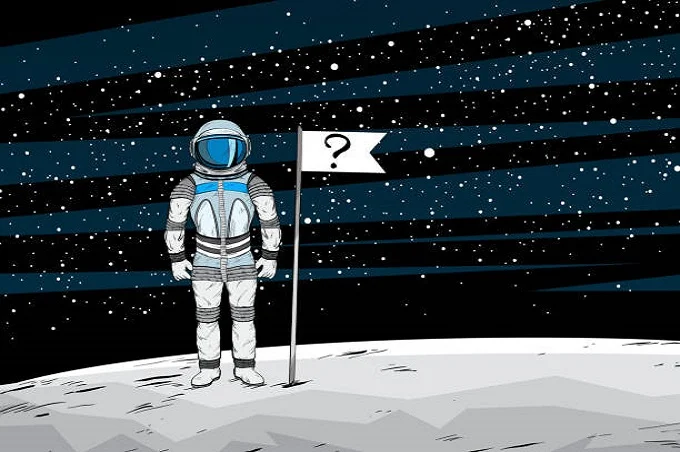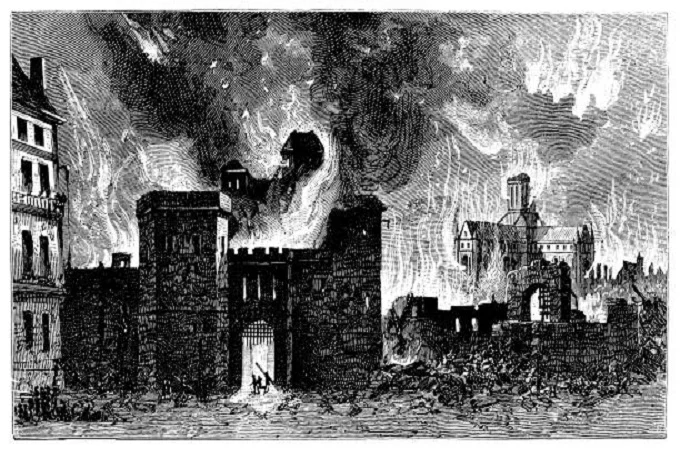9 predictions about the future that came true

Throughout history, fortune tellers have appeared who predicted various events – from the ascension of people to the throne to the death of the world. These predictions were based on fiction, the twisting of facts or simple logic.
With the growing interest in popular science literature, predictions began to appear (usually about technology) that came true in the future. And some of them were so accurate that it seems as if they were able to see into the future.
1. Landing on the Moon

Since ancient times, people have dreamed of getting to the Moon, and only science fiction writers were able to show how this can be done. In 1865, Jules Verne’s novel “From the Earth to the Moon” was published, which told about the flight to the satellite of our planet. The author describes a ship made of aluminium, which began to be used in the aerospace industry in the 20th century. To get the latest stories, install our app here
The crew of the ship consisted of three people. The same number was on Apollo 11, the first to fly to the Moon. Another coincidence is the launch pad. The ship took off from the launch pad in Tampa, Florida, according to the plot. The fictional site is only a couple of hours away from the real US Air Force base at Cape Canaveral, where Apollo 11 took off.
The author also provided the presence in the spacecraft of an air regeneration apparatus and a deceleration device before landing. The approximate time of flight to the Moon is also a coincidence. The novel’s full title is De la Terre à la Lune, Trajet direct en 97 Heures 20 minutes, which translates as “From the Earth to the Moon by a direct route in 97 hours and 20 minutes.” This is four days – it takes the Apollo 11 crew to fly to the Earth’s satellite.
2. The blackest material
In 1980, the novel” The Restaurant at the End of the Universe” by Douglas Adams was published, continuing another author’s work – “The Hitchhiker’s Guide to the Galaxy”. In it, one of the characters, Ford Perfect, admires the material’s blackness from which the spaceship is made, saying that he can hardly see its shape and is almost unbearable to look at it. It is also impossible to tell how close you stand to it.
The prediction of such a black material was made decades before the invention of Vantablack, the blackest material that absorbs 99.965% of visible colour. This is due to the structure of nanotubes, in which photons get stuck and scattered. Looking at Vantablack is also impossible because the human brain cannot associate it with anything that existed before this material. In addition, it is difficult to determine how close this material is due to the almost complete absorption of light.
3. Digitization and the Internet

Arthur Clarke is one of the most influential science fiction writers in the history of humankind. Many of his predictions came true. For example, back in the 70s of the last century, he said that paper communications would become obsolete and go digital. All the knowledge of humankind would be available through a “central library” that would adapt the information to the personal interests of everyone.
Another example of digitalization presented by the author is remote surgery. In the 1960s, Clarke described a robot capable of operating under a surgeon’s control on the other side of the planet. Such robots appeared in 2000, and they are constantly being improved.
He also described in his novels tablets with high-definition screens to which keyboards were attached. With their help, it was possible to make video calls, gain access to the global network, and do what people of the 21st century have long become familiar with.
In addition, Arthur Clark described a system of communication satellites in geostationary orbits as early as 1945, and in 1954 proposed the use of orbiting satellites for weather forecasting.
4, Nuclear weapons

H. G. Wells made many predictions for the future, some of which came true. Among them were nuclear weapons, and the author predicted their invention back in 1914 in the novel “The World Set Free”. The work describes a war during which there was a continuous bombardment of atomic bombs for a long time, after which a utopian society arose from the ashes of destruction. To get the latest stories, install our app here
Wells describes atomic bombs as weapons that guarantee mutual destruction. It did not differ much in power from conventional high-explosive charges but nevertheless acted on the principle of fission of atoms. Moreover, the author was based on the works of famous physicists of the early 20th century, so this is not just a fantasy but an assumption based on science.
5. Organ Transplant
Nearly 300 years before the first major organ transplant in 1954, Robert Boyle, the inventor of modern chemistry, foresaw “the cure of diseases by… transplanting” in a note in his journal. According to experts, Boyle is also recognized with insight about LSD, aspirin, and sleeping medicines.
6. The sinking of the Titanic
The transatlantic steamer Titanic sank in April 1912. Fourteen years earlier, in 1898, Morgan Robertson’s novel” Futility” was published, which was later published under the title Futility, or The Wreck of the Titan. In this novel, the author described the death of the ship “Titan”, which was considered unsinkable.
And although the novel does not coincide with the real catastrophe in everything, it predicts the future in sufficient detail. So, for example, the fictional ship “Titan” has almost the same technical characteristics as the infamous “Titanic”. In the book and the real disaster, the time of the crash, the collision with the iceberg and the location of the hole on the starboard side, as well as the lack of boats to save people due to the confidence of the owners of the ship in its unsinkability, coincide. The ships even had approximately the same speed: 25 knots for the Titan versus 22.5 for the Titanic.
This isn’t the only time Morgan Robertson has predicted the future. In 1905, he wrote “The Submarine Destroyer”, a novel about a submarine that was navigated by a periscope. At that time, there were already attempts to create submarines, but without a periscope, and this device appeared only before the Second World War.
7. Wi-Fi and mobile phones

Nikola Tesla, the great scientist and electrical engineer, predicted mobile phones in 1909. “It will soon be possible, for example, for a businessman in New York to dictate instructions and have them appear in type in London or elsewhere,” Tesla says in an interview with the New York Times published in Popular Mechanics.
He’ll be able to make calls from his office to any phone subscriber in the world. It will only be required to carry a little, affordable equipment the size of a watch that will allow its user to hear for thousands of kilometres on sea or land.”
8. Antidepressants
Aldous Huxley is best known for his 1932 dystopian novel” Brave New World”. In it, he predicted the creation of an antidepressant – soma, which was used by the inhabitants of London of the XXVI century. With this tool, Londoners escape the grim reality, getting rid of depression and other psychological problems. After drinking, all anxieties leave, the world becomes, according to the author’s description, warm, bright and infinitely friendly.
To get the latest stories, install our app here
Real antidepressants appeared only in the middle of the 20th century with the development of psychiatry and the departure from punitive measures in the treatment of patients. Antidepressants, like soma, improve mood relieve melancholy, anxiety, irritability and other negative emotions.
9. The Great Fire of London in 1666

Nostradamus predicted the Great Fire of London in 1666; during his lifetime, he wrote multiple volumes of predictions, predicting world events that are often in unclear language.
In his prediction: “The blood of the just will be lacking in London,/Burnt up in the fire of ‘66:/The ancient Lady will topple from her high place,/ Many of the same sects will be killed.”
A small fire at Thomas Farriner’s bakery on Pudding Lane in London escalated into a three-day firestorm that destroyed the city on Sept. 2, 1666. It became known as the Great Fire of London.




